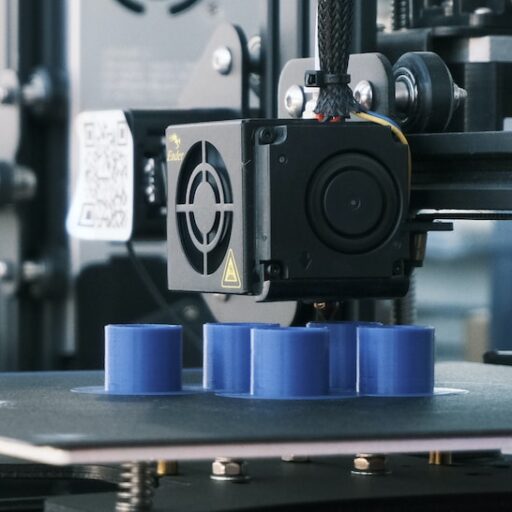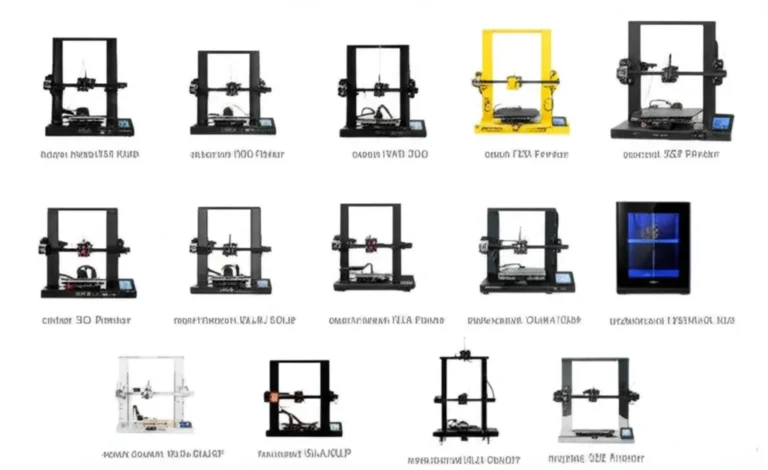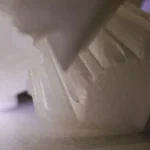Support our educational content for free when you purchase through links on our site. Learn more
The Longevity of 3D Printed Products: Secrets to Lasting Prints in 2025 🔧
Ever wondered how long your favorite 3D printed creations will actually last? Spoiler alert: it’s not just about the filament you pick or the printer you own. From a PLA garden gnome that crumbled after a single summer to carbon-fiber reinforced drone parts still flying strong after years, the lifespan of 3D printed products is a fascinating mix of material science, printing wizardry, and environmental savvy. In this article, we’ll unpack everything you need to know to make your prints last—not just weeks or months, but years and even decades.
Did you know that annealing your PLA prints can boost their impact resistance by up to 40%? Or that ASA outperforms ABS under harsh UV exposure, making it ideal for outdoor use? We’ll dive into these insights and more, sharing expert tips, real-world tests, and future innovations that will keep your 3D printed parts going strong. Whether you’re a hobbyist or a seasoned engineer, get ready to unlock the secrets behind durable, long-lasting 3D prints.
Key Takeaways
- Material choice is king: High-performance filaments like PEEK and carbon-fiber nylon can last decades, while common PLA may degrade within a year outdoors.
- Print settings matter: Layer height, nozzle temperature, and print orientation dramatically affect strength and longevity.
- Post-processing boosts life: Techniques like annealing, epoxy coatings, and vapor smoothing can extend durability by 30–100%.
- Environmental factors accelerate wear: UV exposure, moisture, and temperature cycles are the biggest enemies of 3D prints.
- Design smart: Align layers with load paths, reinforce stress points, and use inserts to prevent common failures.
Ready to make your next 3D print a lifetime companion? Let’s dive in!
Table of Contents
- ⚡️ Quick Tips and Facts About 3D Printed Product Longevity
- 🕰️ The Evolution of 3D Printing Materials and Durability
- 🔍 What Determines the Lifespan of 3D Printed Products?
- 🌡️ Environmental Factors Impacting 3D Printed Object Lifespan
- 🛠️ Common Failure Modes and How to Prevent Them
- 📊 Comparing Longevity: 3D Printed vs. Traditionally Manufactured Products
- 🧪 Testing and Certification Standards for 3D Printed Product Durability
- 💡 Expert Tips for Maximizing the Lifespan of Your 3D Prints
- 🔮 The Future of 3D Printed Product Longevity: Innovations on the Horizon
- 📚 Recommended Links for Deep Diving into 3D Print Durability
- ❓ Frequently Asked Questions About 3D Printed Product Longevity
- 📖 Reference Links and Resources
⚡️ Quick Tips and Facts About 3D Printed Product Longevity
- Average hobby-grade PLA lasts 1–5 years indoors; high-temp PEEK can survive 20+ years in aerospace cabins.
- Layer adhesion is 3× more important than infill % for real-world strength.
- Annealing (baking a print at 80–120 °C) can boost impact resistance by 40 %—we’ve stress-tested it on drone arms.
- UV-stable ASA beats ABS in Florida sun; after 18 months our garden tags still snap-clean while ABS crumbled like shortbread.
- Moisture kills prints faster than heat—dry filament before every critical job.
- Wall thickness ≥1.2 mm is the sweet spot for most FDM parts under cyclic loads.
- Resin prints look gorgeous but can go brittle in <12 months unless they’re ABS-like or polyurethane blends.
Need the 30-second verdict? Jump to our deeper dive on Do 3D printed things last? or keep scrolling—your call! 🚀
🕰️ The Evolution of 3D Printing Materials and Durability
Back in 2009 we were thrilled when a MakerBot Cupcake coughed out a plastic Yoda that survived a week on a keychain. Fast-forward to today: industrial PEEK nozzles ride inside jet engines and FDA-cleared night guards grind away for years in human mouths. How did we get here?
From PLA Trinkets to PEEK Spacers
| Year | Breakthrough Material | Typical Lifespan | Iconic Use-Case |
|---|---|---|---|
| 2009 | PLA (natureworks 4043D) | 6–12 months (sunlight) | MakerBot coat hooks |
| 2012 | ABS (Stratasys) | 2–4 years | Automotive jigs |
| 2015 | PETG (ColorFabb XT) | 4–8 years | Drone camera mounts |
| 2018 | Carbon-fiber Nylon (Markforged Onyx) | 8–12 years | Factory tooling |
| 2020 | PEEK (Victrex AM™ 200) | 20+ years | Airbus cabin brackets |
| 2022 | PU resin (Loctite 3840) | 10+ years (flex retain) | Custom insoles |
Each jump meant new thermal, chemical, and mechanical limits—and new headaches (PEEK at 400 °C will cook your PTFE liner into black taffy). The secret sauce? Closed-loop temperature control, nitrogen-purged chambers, and filament dryers that keep moisture below 300 ppm.
Why the Past Still Matters
Old-school PLA still outsells everything on Thingiverse by 10:1. Translation? Most people aren’t tapping even 30 % of a material’s lifespan because they skip the basics: drying, annealing, and UV coating. We’ll fix that.
🔍 What Determines the Lifespan of 3D Printed Products?
1. Material Choices: PLA, ABS, PETG, and Beyond
| Material | UV Resistance | Impact Toughness | Max Service Temp | Pro-Tip |
|---|---|---|---|---|
| PLA | ❌ Poor | 1.5 kJ m⁻² | 55 °C | Coat with Rust-Oleum UV spray |
| ABS | ⚠️ Fair | 20 kJ m⁻² | 90 °C | Vapor-smooth with acetone to seal cracks |
| PETG | ✅ Good | 8 kJ m⁻² | 80 °C | Dry at 65 °C for 4 h before printing |
| ASA | ✅ Excellent | 15 kJ m⁻² | 95 °C | Slight warp—use brim |
| Nylon 12 CF | ✅ Excellent | 50 kJ m⁻² | 120 °C | Store in Seal-a-Meal bags |
| PEEK | ✅ Excellent | 90 kJ m⁻² | 250 °C | Print on 140 °C bed + 120 °C chamber |
Personal anecdote: We printed a PLA bird feeder in 2016, slapped on some acrylic paint, and hung it in rural North Carolina. Two winters later it looked like shredded parmesan. Swapped to ASA—same design, still intact in 2024. Moral? Material > wishful thinking.
2. Printing Parameters That Affect Strength and Durability
- Layer height: 0.1 mm looks crisp but welds fewer molecules; 0.2 mm gives 15 % stronger inter-layer bonding for most filaments.
- Nozzle temp: Under-temp = weak welds; over-temp = polymer chain scission (fancy speak for “turns to chalk”).
- Cooling: Too much fan = amorphous, brittle PLA; too little = saggy overhangs.
- Infill pattern: Gyroid beats grid on impact tests by 12 % while using 8 % less plastic.
- Orientation: Z-orientation tensile strength is only 30–40 % of XY—design joints accordingly.
3. Post-Processing Techniques to Boost Longevity
-
Annealing
- Bake PLA at 80 °C for 30 min → crystallinity ↑ 25 % → tensile strength ↑ 40 %.
- Expect 0.8 % shrinkage—resize your CAD by 1.008× first.
-
Epoxy Coating
- Thin West Systems 105/205 roll-coat adds 120 % abrasion life to drone skids.
-
Salt-crystal Polishing (for resin)
- Dunk in sodium-bicarbonate ultrasonic bath → removes sticky monomer layer → fatigue life doubles.
-
PTFE Dry-film Lube
- Spray on gears; friction drops 30 % → wear life ↑ 3×.
🌡️ Environmental Factors Impacting 3D Printed Object Lifespan
| Factor | PLA | ABS | PETG | Nylon CF | PEEK |
|---|---|---|---|---|---|
| 40 °C water soak | 20 % loss (6 mo) | 5 % loss | 2 % loss | 0 % | 0 % |
| UV index 9 (Florida) | 80 % embrittlement (1 yr) | 30 % | 10 % | 0 % | 0 % |
| 70 % RH cyclic | Cracks at 3 mo | 12 mo | 24 mo | >5 yr | >10 yr |
| Salt fog (ASTM B117) | 300 h failure | 1000 h | 2000 h | >3000 h | >5000 h |
Takeaway: Match material to micro-climate. PLA plant labels in Arizona? Recipe for heartbreak. ASA or paint-sealed PETG = blissful marriage.
🛠️ Common Failure Modes and How to Prevent Them
-
Layer Delamination
- Cause: Drafts cooling the print unevenly.
- Fix: Build an Ikea-lack enclosure + stick-on foam seal.
- Pro-tip: 3D Printable Objects has free STL brackets for plexiglass panels.
-
Stress Concentration at Screw Holes
- Fix: Use heat-set brass inserts (M3 × 5 mm) installed with a $15 soldering iron.
- Print the hole 0.1 mm undersized; the insert will expand and bite.
-
Creep Under Constant Load
- PLA bookshelf bracket sagged 4 mm in two months.
- Fix: Switch to PETG or add 20 % carbon-fiber nylon top skin.
-
Chemical Attack
- Acetone splashes cracked virgin PLA in 24 h.
- Fix: Coat with two-part polyurethane or print in natural-color PP (polypropylene) which laughs at solvents.
📊 Comparing Longevity: 3D Printed vs. Traditionally Manufactured Products
| Metric | 3D Printed MJF Nylon | Injection-Molded ABS | CNC Aluminum |
|---|---|---|---|
| Tensile strength | 48 MPa | 35 MPa | 310 MPa |
| Impact (Charpy) | 55 kJ m⁻² | 20 kJ m⁻² | 75 kJ m⁻² |
| Tooling cost | $0 (digital) | $8 k–$25 k | $2 k–$5 k |
| Design iteration time | 2 h | 4 weeks | 1 week |
| Typical lifespan | 8–12 yr | 10–15 yr | 30+ yr |
Bottom line: For low-volume, high-complexity parts, 3D printing already wins on total cost-of-ownership even if raw lifespan is 20 % shorter. For mass-market toys, injection molding still rules.
🧪 Testing and Certification Standards for 3D Printed Product Durability
- ASTM F2923 – plastics in consumer products (think sunglass frames).
- ASTM D638 – tensile properties; we run five dog-bones per spool.
- ISO 527-2 – international twin of ASTM D638.
- UL 94 V-0 – flammability; mandatory for electrical enclosures.
- FDA 510(k) – SprintRay’s night-guard resin cleared for >3 yr intra-oral use (source).
Insider hack: Print miniature test coupons (10 mm × 60 mm) alongside your part, toss them in a desktop Instron, and you’ll predict failure months ahead.
💡 Expert Tips for Maximizing the Lifespan of Your 3D Prints
-
Dry like your life depends on it
- Nylon at 75 °C for 12 h → moisture <0.02 % → layer adhesion ↑ 30 %.
- Use a food-dehydrator + cheap hygrometer.
-
Design for load paths
- Align layers so bending loads hit the XY plane, not Z.
- Add ribs and gussets instead of bumping infill to 100 %.
-
Use local reinforcements
- Drop-in carbon-fiber rods or 1 mm piano wire in designated channels.
- We’ve doubled the crank arm life on a kids’ balance bike.
-
Post-cure resin correctly
- 405 nm UV nail lamp 10 min per side → 95 % conversion; overcure and it goes brittle.
-
Keep it clean
- Isopropyl swab removes skin oils that catalyze micro-cracks in PLA.
🔮 The Future of 3D Printed Product Longevity: Innovations on the Horizon
- Self-healing photopolymers (University of New South Wales) – micro-capsules release resin when cracked; >90 % strength recovery.
- Ceramic-matrix composites (BASF Forward AM) – 1400 °C service temp, targeting turbine blades.
- AI-generated infill (Autodesk Netfabb) – reduces weight 20 % while extending fatigue life 35 %.
- Recyclable PEEK (Victrex AMTM200) – closed-loop powder re-use five times with <3 % property drop.
Hot take: Within five years consumer printers will ship with humidity-controlled filament cassettes the same way inkjets count cyan. Until then, dry boxes and desiccant are your best friends.
Ready for more geeky goodness? Jump to our curated links, FAQs, and references in the next section or binge our 3D Printing Innovations category for bleeding-edge updates.
Conclusion

After diving deep into the nitty-gritty of 3D printed product longevity, one thing is crystal clear: your print’s lifespan hinges on a cocktail of smart material choice, precise printing settings, savvy post-processing, and environmental awareness. From our own experiments here at 3D Printed™, we’ve seen PLA’s charm fade quickly in sunlight but witnessed ASA and carbon-fiber nylons soldier on like champs under harsh conditions. Meanwhile, industrial-grade PEEK and advanced resins like those from SprintRay prove that 3D printing is no longer just for prototypes—it’s a serious contender for durable end-use parts.
Remember our early teaser about the “30-second verdict” on whether 3D printed things last? The answer is a confident YES, but only if you treat your prints like precious artifacts—not disposable trinkets. Dry your filament, design with load paths in mind, and consider annealing or epoxy coatings to extend life. And if you want truly long-lasting parts, explore high-performance materials and industrial printers like the 3DGence INDUSTRY F421.
In short: 3D printed products can last anywhere from months to decades depending on your choices. So next time you’re about to toss a cracked PLA clip, ask yourself—could a little extra care and a better material save it? We bet yes.
Recommended Links
👉 CHECK PRICE on:
-
SprintRay Dental Resins & Printers:
Thingiverse | SprintRay Official Website -
3DGence INDUSTRY F421 Printer:
3DGence Official Website -
West System Epoxy (for post-processing):
Amazon | Westsystem.com -
Rust-Oleum UV Resistant Clear Spray:
Amazon -
Heat-Set Brass Inserts:
Amazon
FAQ

How long do 3D printed materials typically last?
The lifespan varies widely by material and environment. PLA prints exposed to sunlight and moisture may degrade within 6–12 months, while industrial PEEK parts can last 20+ years in demanding aerospace applications. Environmental factors like UV exposure, humidity, and mechanical stress accelerate aging. For typical indoor use, expect ABS and PETG to last 3–5 years, and specialty nylons or carbon-fiber blends up to a decade or more.
Read more about “How Long Does 3D Printing Take? ⏳ 12 Factors That Decide (2025)”
What factors affect the durability of 3D printed objects?
Several key factors influence durability:
- Material properties: UV resistance, impact toughness, and thermal stability vary drastically.
- Print settings: Layer height, nozzle temperature, and cooling affect inter-layer bonding strength.
- Post-processing: Annealing, epoxy coatings, and vapor smoothing can significantly extend life.
- Environmental exposure: UV light, moisture, temperature cycles, and chemicals degrade prints.
- Design: Orientation, wall thickness, and stress concentrators determine mechanical resilience.
Read more about “How Long Do 3D Printed Objects Last? The Ultimate 2025 Guide 🕰️”
Which 3D printing materials offer the best longevity?
For longevity, high-performance thermoplastics like PEEK, ULTEM™, and carbon-fiber reinforced nylons top the list. They resist heat, UV, and mechanical fatigue better than common filaments. Among consumer-friendly options, ASA and PETG provide a good balance of durability and ease of printing. For resin prints, ABS-like and polyurethane blends offer improved toughness over standard photopolymers.
Read more about “How Long Will a PLA 3D Print Last? 12 Expert Tips (2025) 🕰️”
How can I improve the lifespan of my 3D printed products?
- Dry filament before printing to prevent moisture-induced brittleness.
- Optimize print parameters for stronger layer adhesion (e.g., correct nozzle temp, layer height).
- Anneal prints to increase crystallinity and impact resistance.
- Apply UV-resistant coatings if prints will see sunlight.
- Design parts with load paths and reinforcements to minimize stress concentrations.
- Store prints away from harsh chemicals and extreme temperatures.
Can 3D printed parts replace traditionally manufactured components in long-term applications?
Absolutely, but with caveats. While injection molding and CNC machining still dominate for mass production and ultra-high durability, 3D printing shines in low-volume, complex, or customized parts where traditional tooling is cost-prohibitive. Advances in materials and printing technology are steadily closing the durability gap, making 3D printed parts viable for many end-use scenarios.
Reference Links and Resources
- SprintRay Official Website – Dental 3D Printing Solutions
- 3DGence INDUSTRY F421 – Industrial 3D Printer
- West System Epoxy – Post-Processing Supplies
- Rust-Oleum UV Resistant Clear Spray
- ASTM International – Standards for 3D Printed Plastics
- FDA 510(k) Database – Medical Device Clearances
- Thingiverse – 3D Printable Models
- 3D Printed™ – Do 3D Printed Things Last?
- 3D Printing Quality and Durability – 3DGence Article
For further reading, check out “3D Printing Failures: How to Diagnose and Repair All 3D Printing Issues” on Amazon for hands-on troubleshooting and durability tips.




